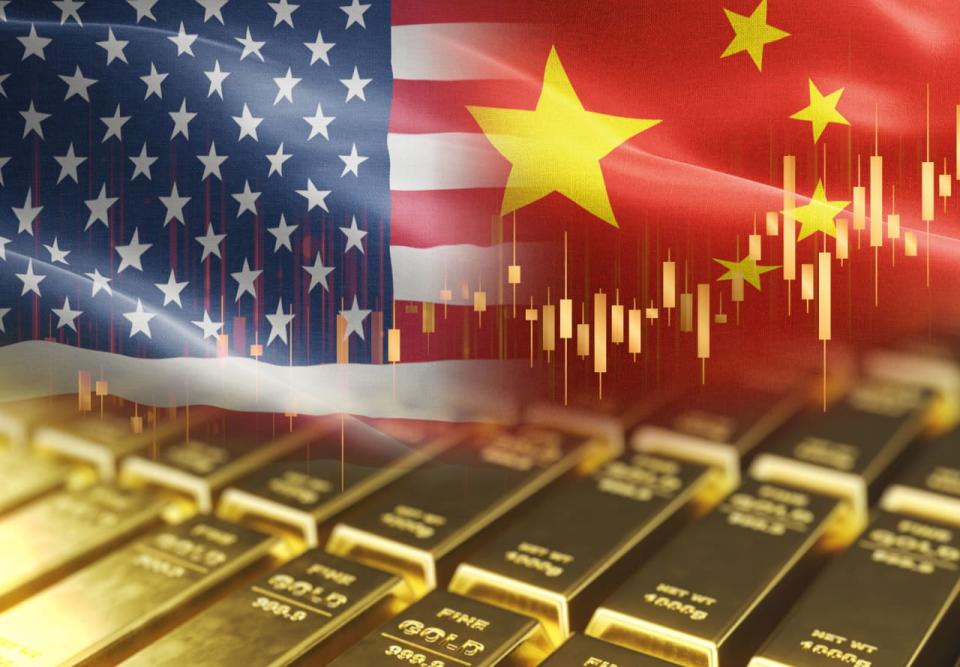
It’s been almost 50 years since U.S. gold futures had their first day of trading, and the precious metal has found a great way to celebrate: 28 record-high settlements so far this year.
And gold may still have room to run, thanks to strong buying by Western investors and global central banks.
Most Read from MarketWatch
“Central-bank demand for gold has surged in the past 5 years, swallowing nearly 1 in every 10 ounces produced by the mining sector on official data,” Adrian Ash, BullionVault’s director of research, said in a commentary this week.
“The seemingly relentless appetite for gold among central banks has become ever-more important to gold’s underlying bull run, both in terms of fundamentals and for wider market sentiment,” he said.
The total quantity of gold held in central-bank reserves has increased by almost 19% by weight since the summer of 2004, and it’s jumped seven-fold — to $2.4 trillion in U.S. dollar value — led by Russia, China, India and Turkey, according to Ash.
The continued buying of gold is “at or very close to exhausting the ‘free-floating inventory’ of tradeable gold,” Paul Wong, market strategist at Sprott Asset Management, told MarketWatch.
The world’s official gold holdings totaled 36,089 metric tons as of May 2024, according to the World Gold Council, which cited calculations from the International Monetary Fund. That’s a sizable amount given market estimates suggest that around 212,582 metric tons of gold has been mined throughout history, according to the World Gold Council.
Gold prices are rising because central banks are buying — likely diversifying away from U.S. Treasurys amid worries about the U.S. fiscal situation, Torsten Slok, chief economist at Apollo Global Management. told MarketWatch.
On Friday, the most-active December gold futures contract GC00 GCZ24 climbed to a record intraday high of $2,538.70 an ounce on Comex, and reached a record settlement of $2,537.80.
Read: Gold extends record run as broad market volatility lures buyers
The latest moves for gold come as the CME Group Inc. CME looks to mark 50 years since the first trading day for gold futures on its exchanges — Dec. 31, 1974.
Geopolitical uncertainty remains elevated, which supports gold. Other investment opportunities for households in China — such as housing and stocks in China and Hong Kong — have declined, increasing demand for gold from Chinese households, Slok said.
High demand from central banks
Central-bank gold demand had spiked after the U.S. and allies imposed sanctions on Russia following the invasion of Ukraine, said Brien Lundin, editor of Gold Newsletter. “After that weaponization of the dollar, central banks sought to insulate themselves by shifting their reserve assets away from the dollar and into gold,” he said.
Read: Why global gold demand marked its best first quarter in 8 years
So 2022 was a record year for central bank gold purchases, with official buying representing about a third of annual gold production, said Lundin. “They bought nearly as much the following year, and so far this year they’re on pace to set a new record.”
In recent months, however, central-bank purchases appeared to have slowed down.
China was a “very large player” in the market early in the year, but has “notably not announced any purchases over the past few months,” Lundin said.
There is some speculation that China hasn’t stopped purchasing gold and has only stopped announcing the purchases to keep the price restrained, he said, citing a recent article from analyst Jan Nieuwenhuijs published on July 29 on Gainesville Coins.
While central-bank purchases have slowed in recent months, central banks remain the “biggest story” for gold over the last two years, said Joe Cavatoni, senior market strategist at the World Gold Council.
Central-bank gold purchases were 3% above the five-year quarterly average in the second quarter, “extending the long-term positive demand trend from this sector,” he told MarketWatch. “This is still a very healthy level of buying.”
East meets Western buyers
Meanwhile, Lundin pointed out that there had been a “relative absence” of Western buyers of gold. But with the Federal Reserve seemingly on a path toward interest-rate cuts beginning next month, “Western investors are coming into the market and repricing gold higher.”
There’s no real reason to expect either central banks or Chinese investors and servers to abandon their gold purchases as Western buying comes in to support the price, he said.
So we could see the “first instance ever in the history of gold as an investible asset” where buyers in both the East and West purchase gold, Lundin said, referring to the post-1971 period. The U.S. monetary system was linked to gold reserves, and “gold was money” until 1971, when President Richard Nixon put an end to the so-called gold standard.
If the market does see both West and East buying gold, that could “result in far higher gold prices than we are seeing today,” Lundin said.
Most Read from MarketWatch
EMEA Tribune is not involved in this news article, it is taken from our partners and or from the News Agencies. Copyright and Credit go to the News Agencies, email news@emeatribune.com Follow our WhatsApp verified Channel





